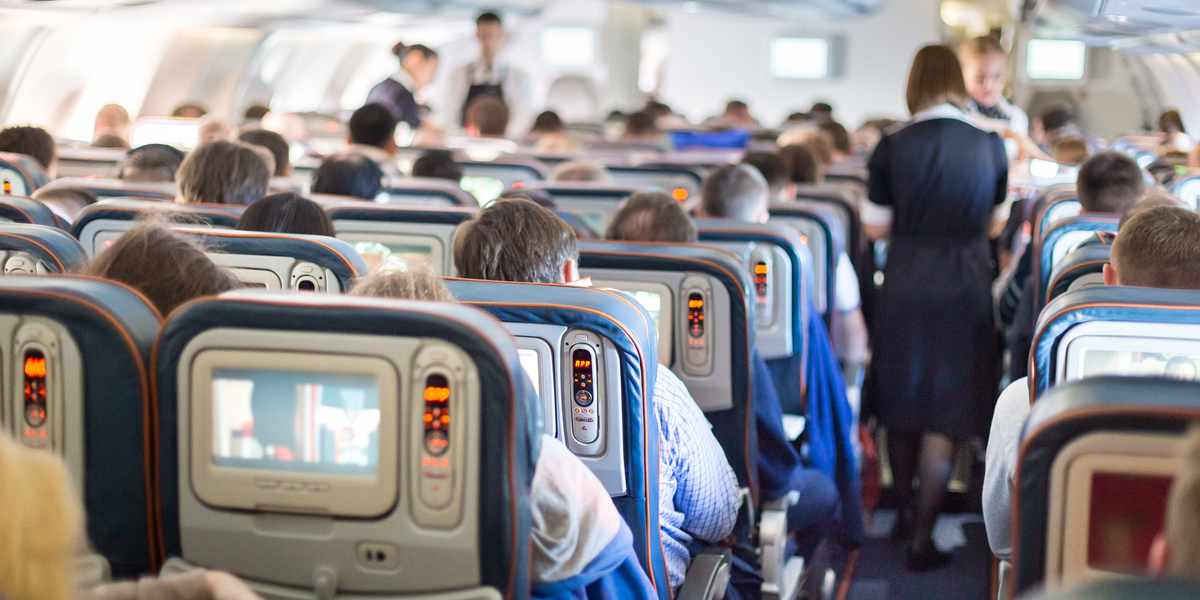When it comes to flying, you hardly ever consider the radiation risk you face from the moment you walk through airport security. With all the electromagnetic fields (EMFs) bombarding you from every direction, you would think that being thousands of feet above the ground would keep you safe from them – at the very least, for the duration of your flight.
Well, you thought wrong. Not only are you exposed to EMFs from all the electronic devices on board the aircraft, but you also face higher levels of cosmic radiation from outer space than if you were on the ground. This guide takes an in-depth look at everything you need to know about radiation from flying on planes.
Exposure Risks – Full-Body Scanners
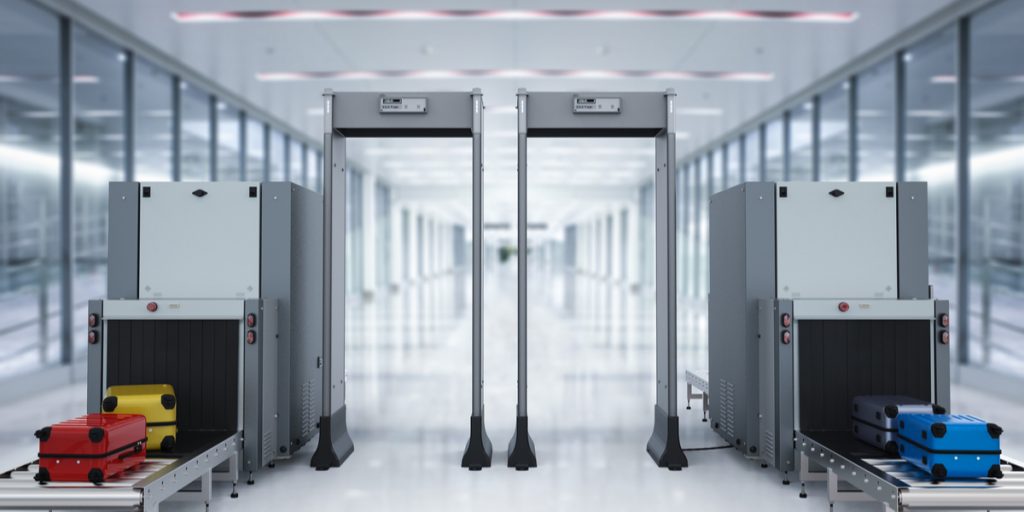
Even before you board the plane, you’re exposed to EMFs from the airport security scanners. The scanners used by the Transportation Security Administration (TSA) are found in all airports across the US and rely on millimeter-wave technology to function. They produce non-ionizing radiation, which falls in the same category as visible light, microwaves, and radio waves.
Previously, non-ionizing energy was thought to have no adverse biological effects on the body and was largely considered safe, unlike ionizing energy. This stance has since changed after a mountain of evidence from research uncovered several harmful effects of non-ionizing radiation.
Previously, the TSA introduced millimeter-wave scanner technology; backscatter X-rays were in use. However, studies conducted by two universities in California found that backscatter X-rays increased the risk of developing cancer. This prompted their replacement with millimeter-wave scanners, which use lower frequency radio waves. Millimeter-wave scanners use the same technology as that in 5G cellular networks.
The health risks these waves pose when used in communication technology are higher compared to their use in body scanners. This is since the exposure time when walking through an airport scanner is inherently lower than when you use your mobile phone for communication.
You would have to be subjected to an estimated 22,500 scans in a year to meet the current threshold of the standard maximum annual radiation dose. Nonetheless, it does add up to your cumulative exposure, given all the other sources of radiation you’re exposed to.
Exposure While Flying
Commercial planes fly between 31,000 and 38,000 feet above the ground. This translates to approximately 5.9 and 7.2 miles, respectively. As the plane continues to ascend, the atmosphere keeps getting thinner. This results in a faster flight due to the reduced air resistance at this level.
On the flip side, however, your exposure to cosmic energy also increases. Cosmic energy is produced by the sun and other stars and enters the atmosphere in the form of invisible waves.
The dose of radiation you’re exposed to increases as you go higher. The atmosphere provides cosmic shielding, but at higher levels where it is thinner, the number of gas molecules per cubic meter of space is fewer. This decreases its ability to deflect the incoming cosmic radiation from space.
Consider an extreme case like space travel. As exciting a career choice it may be, astronauts are exposed to large amounts of radiation from cosmic elements. This puts them at a much higher risk for developing cataracts, heart ailments, and cancer when they stay in space for extended periods.
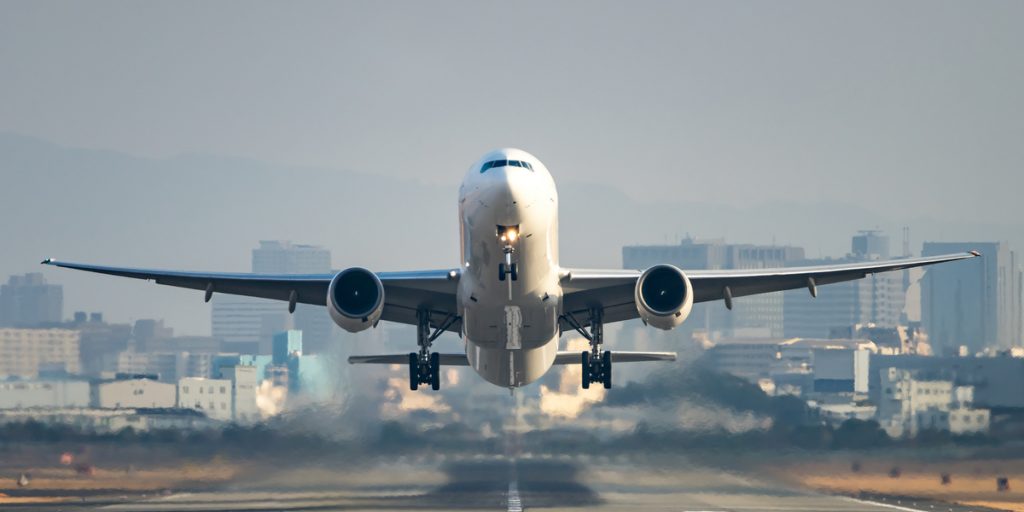
The dream of inhabiting the planet Mars in the future may be nothing more than a fantasy, given how thin the planet’s atmosphere is. It would expose humans to copious amounts of radiation. This illustration is indicative of just how important the earth’s atmosphere is.
There’s also the added exposure risk of solar flares when flying at high altitudes. A solar flare occurs when the sun gives off an unexpected surge of energy. This subsequently increases the amount of exposure you face when flying at high altitudes.
While the occurrence of solar flares is unpredictable, they occur at least once a month. So, if you fly frequently, the likelihood of exposure from solar flares increases dramatically.
EMF Exposure in the Aircraft
Cosmic radiation isn’t the only thing you have to worry about when soaring thousands of feet above the ground. You also face EMF exposure from within the plane. Moreover, the voltage levels inside the plane can be increased when the demand for electricity is high. This subsequently increases the strength of the electric and magnetic fields in the plane, which are, in turn, absorbed by your body.
One common source of EMF exposure when flying is the in-flight wifi. If you’re traveling for work or leisure, in-flight wifi offers a convenient way to get some work done or pass the time when you’re on the move. However, wifi exposure on board the plane is much worse than using wifi anywhere else, like your home or office.
The reason for this has everything to do with the structural design of the aircraft. Its metallic exterior acts like a Faraday cage of sorts trapping EMFs inside with no way of escaping. As a result, you are exposed to extremely high levels of EMF throughout your flight.
If the people seated next to you, in front of you and behind you all happen to be using wifi, your body inadvertently absorbs these signals. Think of it as EMF “second-hand smoke.”
Other sources of EMF include:
- Communication equipment
- Bluetooth from passenger devices
- Cockpit computers
- Electrical wiring around the plane
- Sensors
- Static electricity in the fuselage
- Jet engine
Air Travel and Electromagnetic Hypersensitivity Syndrome
Electromagnetic hypersensitivity syndrome (EHS) refers to a series of symptoms exhibited by people who are exposed to varying amounts of radiation for sustained periods. As you probably know by now, one of the best ways to deflect EMFs is by using metal. (Fact: Aluminum foils prevent emf radiations) However, when you’re in a plane, all the EMFs are trapped inside, which magnifies their effects.
If you are particularly sensitive to EMFs and RF waves, this should concern you. People with EHS usually have a difficult time flying in airplanes, and because of the high levels of exposure, they are subjected to.
If you frequently experience the following symptoms every time you fly, you might be suffering from EHS.
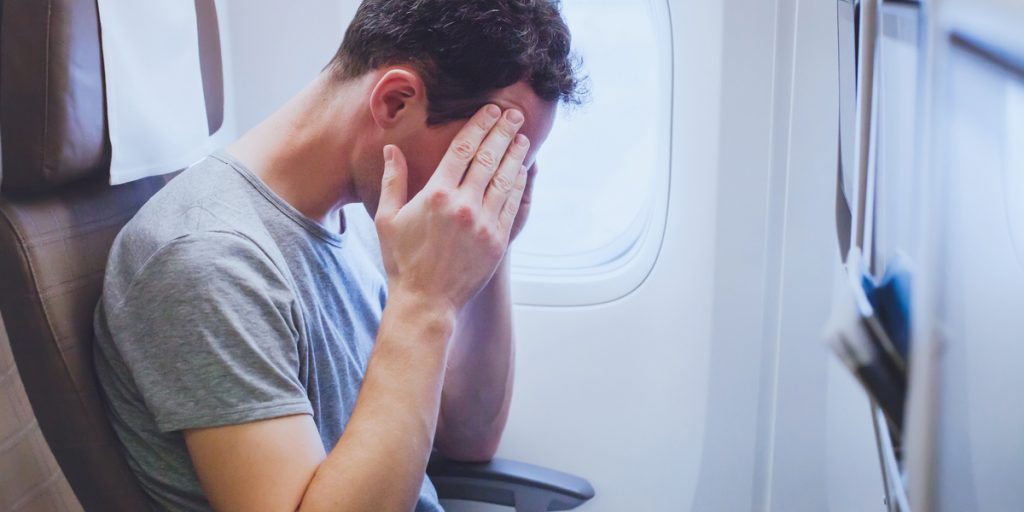
- Nausea
- Severe headaches
- Extreme fatigue
- Dizziness
- Concentration issues
- Restlessness and anxiety
- Mood swings
Airplane Radiation Exposure – Protection Tips
If minimizing the frequency of your trips by air is not an option for you, there are several ways you can employ to protect yourself from unnecessary radiation exposure. Here are some top tips that work.
1. Opt-Out of a Full-Body Scan
It is completely legal and well within your rights to opt-out of going through a full-body scanner at the airport. It’s a pretty straightforward process too. Once you’ve shown your ID and ticket to the TSA agent, let the next agent you come across know that you would like to opt-out of walking through the scanning machine.
They will then find a same-sex agent to pat you down instead. Allow for between 15 and 20 minutes for them to find someone to do the pat-down. If you like, you could also request it to be done in a private room, but this could potentially take more time, and you wouldn’t want to miss your flight, would you?
2. Use an EMF Protection Blanket
Kill two birds with one stone by carrying an EMF radiation protection blanket with you on-board the flight. Not only will it block out the majority of EMFs, but it’ll also keep you warm during those cold air-conditioned flights. Get a blanket than can block out up to 100% of radiation.
3. Pick the Best Possible Seat
A window seat on a plane isn’t always the best option when it comes to radiation protection. Remember that the entry point of cosmic radiation is going to be the windows. Picking an aisle seat keeps you at a safe distance away from these entry points.
You also want to pick a seat that is farthest from the cockpit. The cockpit is chock-full of electronic equipment and is an abundant source of EMF radiation.
Additionally, make a point to find out beforehand where the jet engines are located. These could either be on the wings or the tail. So, pick a seat that’s away from those as well.
4. Activate Airplane Mode
Any time you’re outside the cellular network range, your device sends out signals in an attempt to secure a connection. In the process, it emits large amounts of radiation, which contributes to the high levels of ambient EMF trapped in the plane. Therefore, activate airplane mode first, then turn wifi back on any time you need to connect to the in-flight wifi.
5. Avoid Using the In-Flight WiFi
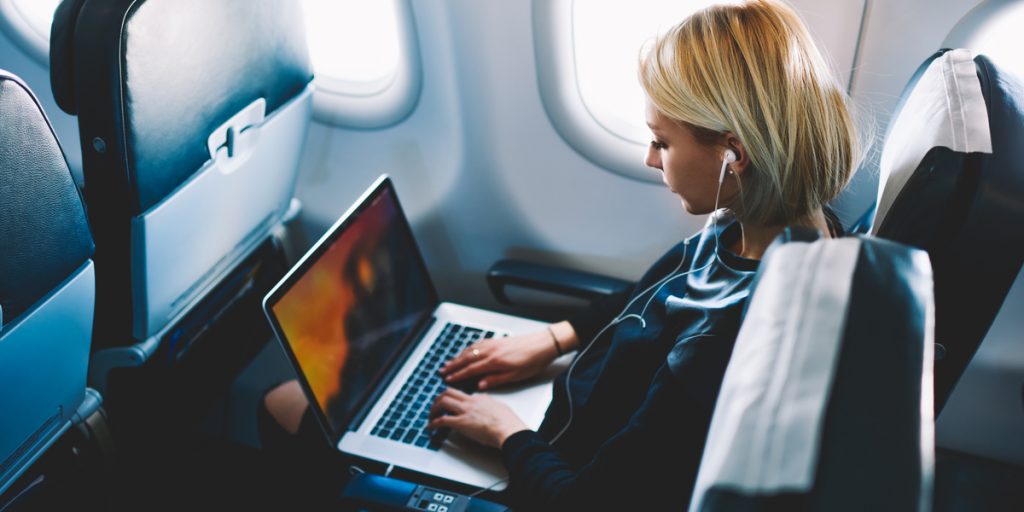
As the adage goes, the best things in life are free. This, however, doesn’t apply to the onboard wifi.
Why contribute to the existing EMF smog when you can simply disconnect for a while and take the time to practice mindfulness? It will work wonders for your mental as well as physical wellbeing.
6. Stay Hydrated
High altitudes typically have less moisture. If you get dehydrated, your cells are more susceptible to getting damaged as a result of the adverse effects that EMF radiation has on the underlying human biological and physiological systems. Staying hydrated helps your body get rid of toxins quickly and efficiently, therefore, enhancing the natural flow of ions within your body.
Moderation is the Key to Reducing Radiation Exposure
Being able to experience different cultures through travel is, no doubt, an amazing experience. The fact that you can hop onto a plane and get to a distant location in a matter of minutes/hours is indeed brilliant.
But, as is the case with all technology, it brings with it potential risks, among which is radiation exposure. If you can’t avoid air travel, use the tips in this guide to educate and protect yourself against radiation. Is your smartwatch making you sick? Read our blog to find out the major health risks associated with smartwatches and the safety measures you can take to protect yourself.
Read next: Is It Safe to Sleep with AirPods?

